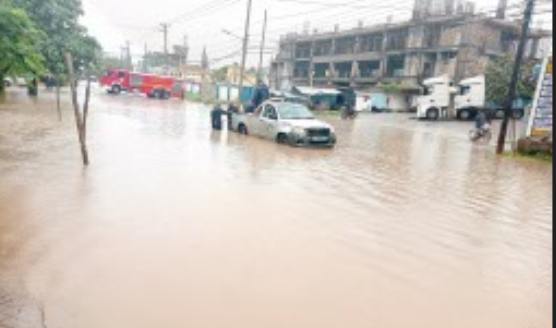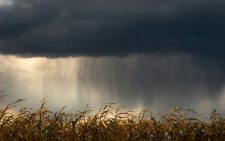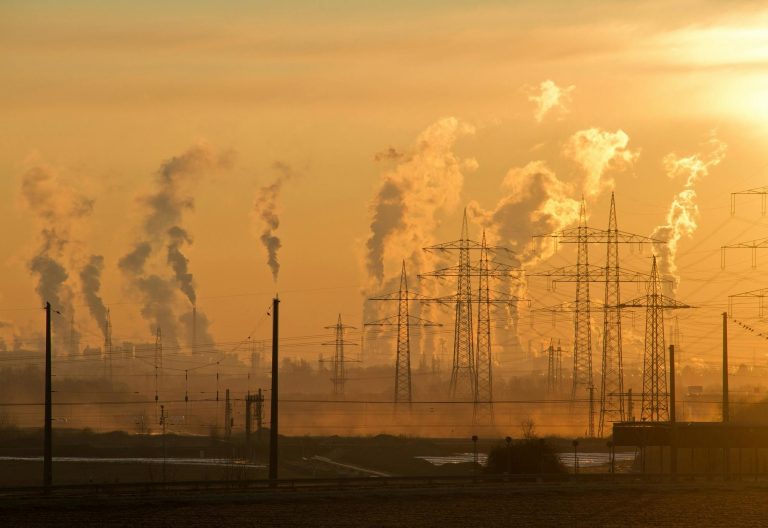Downpour leaves widespread damage across Mombasa

A relentless downpour that began earlier this week intensified yesterday, unleashing widespread destruction across Mombasa.
The aftermath included flooded homes and businesses, blocked sewers, impassable roads, and an overwhelming stench of raw sewage that lingered over the coastal city for most of the day.
In Nyali, a major transport artery was rendered nearly unusable. Motorists navigating Links Road faced mounting frustration as floodwaters worsened in a valley near Basic Nyali Mall—a section that has remained submerged for several days. The blockage crippled access to the central business district and northern parts of the city.
“Getting into town through Nyali has become a nightmare,” lamented Gerald Omondi, a local matatu driver.
“The water near Basic Nyali Mall is knee-deep. We’re constantly forced onto alternative routes, which only lead to more traffic jams.”
Transport Executive Daniel Manyala confirmed that the county government had mobilised efforts to restore access. The road near Basic Nyali Mall was temporarily closed to allow engineers to drain floodwaters into a nearby quarry—a stopgap solution pending a permanent fix.
“This section has been a perennial problem,” said Manyala, speaking at the site. “The road falls under the Kenya Urban Roads Authority (KURA), and drainage issues have persisted for years. Governor Abdulswamad Nassir has pushed hard, writing repeatedly to the Roads Cabinet Secretary.
KURA recently floated a tender for a major drainage project stretching from this area to the Bliss Hotel and eventually out to the ocean. Unfortunately, the project has stalled due to a pending appeal on the tender.
Until then, we’re providing temporary relief.”
Manyala also raised alarms over a disturbing trend whereby some developers illegally divert raw sewage into stormwater drains, worsening the flood crisis.
“It’s criminal to put up high-rise buildings without proper waste management systems like bio-digesters or septic tanks,” he warned. “Dumping raw sewage into storm drains not only creates a terrible stench—it exposes residents to dangerous waterborne diseases.”
Governor Nassir previously flagged tall buildings in Nyali, especially along Links Road for obstructing natural waterways. However, immediate solutions to the area’s chronic flooding remain elusive.
The situation has left many parts of the city underwater. In Kongowea, Likoni, Mishomoroni, and Bombolulu, families and business owners are counting losses. At the busy Kongowea market, access has become a logistical nightmare.
Wilson Kamau Irungu, a transporter delivering goods to the market, said sections of the road between Ratna-Karama and the market were completely submerged, making it difficult for trucks and vehicles to get through.
Boda boda operators, critical for last-mile transport,t also bore the brunt. Many hiked fares to cope with the harsh conditions.
“With roads flooded, we can’t charge normal rates,” said one operator. “The water damages our bikes. After these rains, we’ll need new chains, sprockets, and repairs. We have to cover those costs somehow.”
In flood-prone Junda, business activity ground to a near halt as floodwaters swallowed entire roads. Residents in Matopeni and Kambi Kikuyu, located in Nyali constituency, were marooned in their homes due to clogged and inadequate drainage systems.
The Kenya Meteorological Department has warned that more rain is on the way. In a seven-day forecast spanning May 6 to May 12, the agency predicts significant rainfall across many parts of the country, including the Coast, cautioning that isolated heavy downpours may worsen an already dire situation.
The Deputy Director of the Kenya Meteorological Department, Kennedy Thiong’o, has urged Kenyans living in various parts of the country to brace for moderate to heavy rains this week.
Thiong’o, while addressing members of the public on Monday evening, said rainfall was expected over several parts of the country from Tuesday this week to Monday next week.
There will be isolated heavy rainfall events expected over most parts of the Highlands East and West of the Rift Valley, the Lake Victoria Basin, the Rift Valley and the Coastal region.













